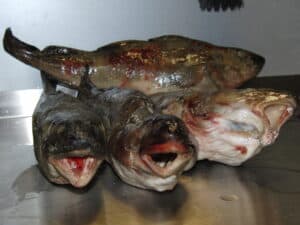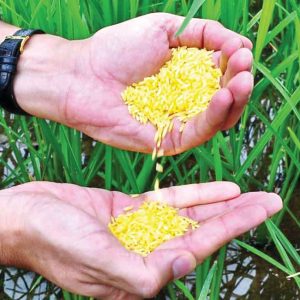There are two known routes for how GMO crops can push with increased antibiotic resistance in microbial environments. One is that a gene for antibiotic resistance that is often inserted into GMO crops is "swallowed" by bacteria and becomes part of their DNA genome. If the gene can survive, new resistant bacteria will be able to establish themselves with the gene. This can probably occur if it is in an environment with antibiotic concentrations around the lower threshold level for effectiveness. Another route is where bakeries are in an environment with very low traces of antibiotics as there may be in livestock, animal feed, soil, waterways and drains. The effect of these low sublethal concentrations on bacteria changes if there are also traces of other agents such as herbicides in the same environment. Both the active substance in herbicides and surfactants in herbicides can change bacterial survival towards higher concentrations of antibiotics.
GMO crops have generally been altered by the insertion of a foreign gene to give the plants a trait that will promote their survival until harvest. A common inserted gene of major crops such as corn, soy, canola and cotton is a gene for herbicide resistance. The producers of the world's most widely used herbicides also own and produce seeds that have been genetically modified to be resistant to precisely their herbicides. This means that a dose of their herbicide that would normally be lethal to all plants can be sprayed over their GMO crops without killing them, but will be able to kill all other plants. In contrast, these herbicides have other potentially more sinister properties; they can increase levels of bacterial antibiotic resistance in the environment.
Common active ingredients in herbicides on herbicide-resistant crops are; dicamba, 2,4-D and glyphosate. These are active ingredients for a wide range of commercial herbicides used on GMO crops. The fact that higher concentrations of these are generally used on GMO crops can lead to unwanted antibiotic responses among microbes. In a survey, the responses were to two human pathogens, Salmonella enterica Serovar Typhimurium and E.coli measured. These were measured on petri dishes exposed to five different antibiotics three different herbicide active ingredients. The concentrations of herbicide active ingredient alone for the herbicides used did not reduce the development of bacterial colonies. However, the response to antibiotics differed depending on the herbicide active ingredient used. Also, the same herbicide could elicit different responses depending on which antibiotic the bacteria were exposed to.
The bacteria exposed to an active herbicidal ingredient can survive and develop at higher concentrations of antibiotics than bacteria not exposed to one of the active herbicidal ingredients. Occasionally, the effect of a herbicide was to reduce the survival of the bacteria against a particular antibiotic. These effects were observed mainly when higher amounts of antibiotics were tested. Also, other herbicide ingredients, surfactants, chemicals used to promote the uptake of herbicide by the plants, were found to increase the survival of S. enterica and E. coli against higher concentrations of certain antibiotics. This also suggests that some agricultural workers who have been prescribed antibiotics and who use herbicides may be more susceptible to complications caused by certain bacterial species gaining higher antibiotic resistance when there are traces of herbicides in the environment. It also has something to say for livestock fed with fodder that may contain herbicide residues. These may also be exposed to more resistant bacteria.
Link:
Reference:
Kurenbach B., Gibson PS, Hill AM, Bitzer AS, Silby MW, Godsoe W., and JA Heinemann. 2017. Herbicide ingredients change Salmonella enterica sv. Typhimurium and Escherichia coli antibiotic responses. Microbiology; 163:1791-1801. DOI 10.1099/mic.0.000573



